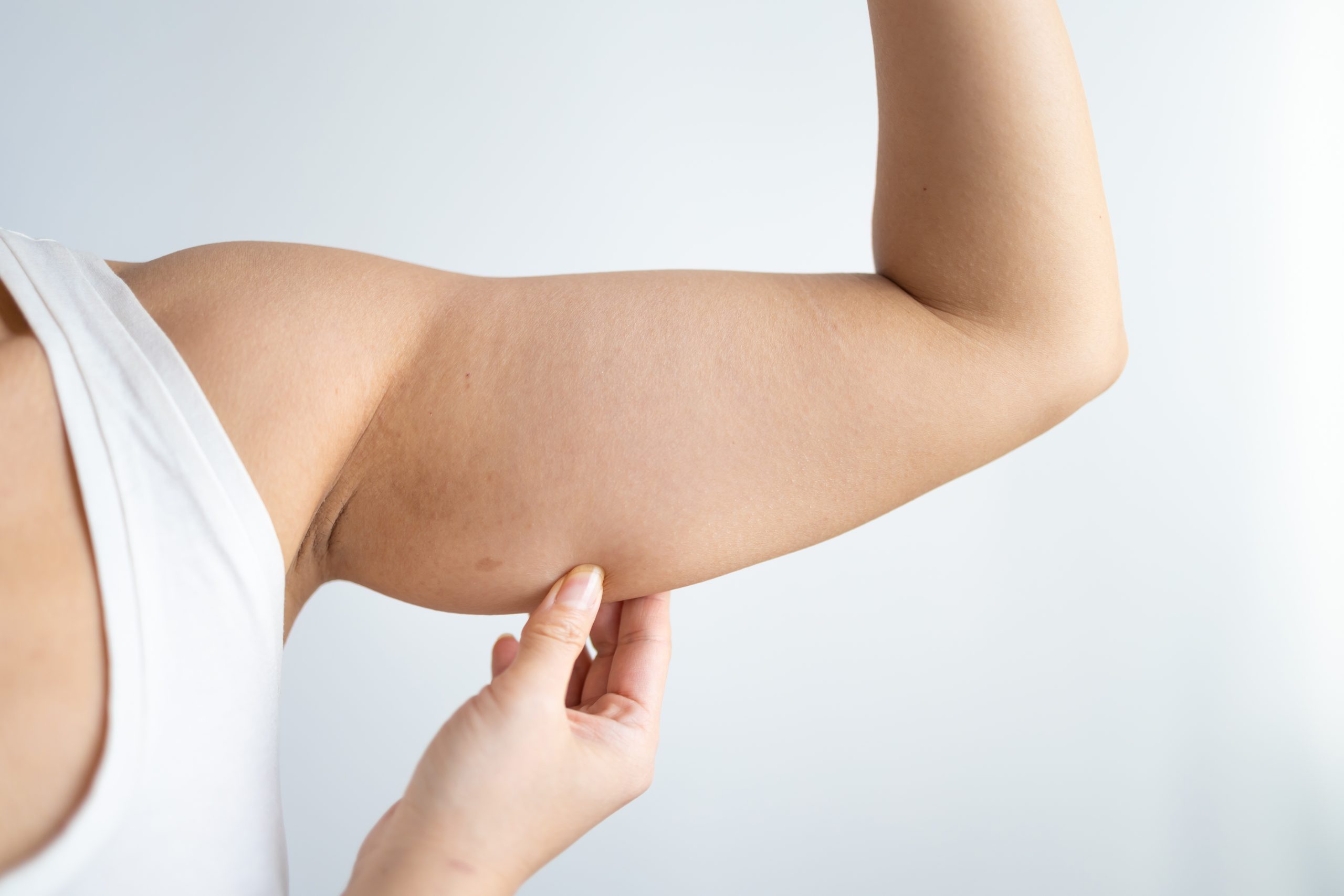Introduction
Do you find yourself dreading the sight of your arms jiggling in the mirror? Are you longing for toned and firm arms that look great in sleeveless tops? If you’ve tried various exercises and diets to combat stubborn arm fat with little success, there’s a solution that can effectively eliminate sagging skin on your arms. In this article, we’ll dive deeper into the world of arm lift surgery, also known as brachioplasty, to provide you with all the information you need.
What is an Arm Lift (Brachioplasty)
As we age, our skin and muscles naturally lose their tone and elasticity. Over time, fat can accumulate and droop in the underside of the arms, resulting in the often-dreaded appearance of “bat wings” or “bingo arms.” Factors such as weight loss, weight gain, genetics, pregnancy, and breastfeeding can contribute to significant changes in arm size and shape, leaving many individuals feeling self-conscious about their upper arms. Thankfully, arm lift surgery offers a solution to this common concern.
Arm lift surgery, technically known as brachioplasty, is a cosmetic surgical procedure designed to reduce sagging skin on the arms. This procedure involves the removal of excess fat and skin from the upper arms, extending from the underarm region to the elbow and including the armpits. Additionally, it involves the smoothing and tightening of the supporting tissue, resulting in slimmer, more proportionate arms. Here are some reasons why you might consider brachioplasty.

Is the arm lift (Brachioplasty) worth it?
Sagging skin at the arms can not always be improved naturally, especially after massive weight loss, with aging or out of genetically reasons.
There an arm lift surgery (brachioplasty) is the only solution, to finally get rid of sagging skin. Some benefits of arm lift surgery are:
Gain Confidence and Comfort
- Achieve newfound confidence and feel comfortable in your own skin.
Alleviate Discomfort
- Reduce discomfort such as pinching, tucking, and carrying excess weight due to the presence of excessive skin folds.
Enhance Hygiene and Health
- Address hygiene and health issues like sweat irritation, rash, and yeast infections that can occur in areas where excess skin folds trap moisture.
Reveal the Results of Weight Loss
- See the visible results of your weight loss journey, especially if you’ve experienced significant weight loss or did not include weight training in your exercise routine.
Refine Arm Contour
- Improve the shape and contour of your arms for a more sculpted appearance.
Who is an ideal candidate for Arm Lift (Brachioplasty)?
Not everyone is an ideal candidate for arm lift surgery. Good candidates typically have excess sagging skin in the upper arm area, are non-smokers, maintain good health, and do not have pre-existing medical conditions. Stable weight and a consistent exercise routine before undergoing the procedure are also important factors.
Certain conditions can increase the risk associated with cosmetic surgery. Individuals who may not be eligible for brachioplasty include:
- Those with diabetes, who may require extensive evaluations for proper scar healing.
- Individuals with connective tissue disorders, such as Ehlers Danlos syndrome, which can lead to poor tissue quality and healing complications.
- People taking oral steroids for medical reasons over an extended period.
- Smokers, who face a higher risk of surgical complications. If you’re serious about cosmetic surgery, quitting smoking is strongly advised, as smoking slows the healing process by reducing blood flow to the skin.
Arm lift surgery steps
General Overview of the Procedure
- Most arm lift surgeries are performed under general anesthesia, although some may use sedation and local anesthesia for certain parts of the body.
- The procedure typically takes up to three hours and involves the following steps:
- The surgeon makes incisions inside the upper arm or behind the arm, which may extend along the armpit to the elbow.
- Excess fat is removed, either surgically or through liposuction.
- If necessary, excess skin is also removed.
- The incisions are carefully closed, with stitches serving to strengthen the underlying muscles, smooth the skin, and define the arm’s shape. Incision length and pattern are determined by the amount and location of excess skin.

What do the scars look life after Arm Lift?
One of the common concerns about arm lift surgery is the presence of scars. The appearance of scars can vary depending on factors such as surgical technique and individual healing. The primary types of scars associated with arm lift surgery include:
- Lollipop Scar: This scar encircles the areola and extends vertically down to the breast crease. It’s commonly used for moderate arm lifts.
- Anchor Scar: The anchor scar encompasses the areola, runs vertically down to the breast crease, and continues horizontally along the crease. It’s typically employed for more extensive arm lifts.
- Keyhole Scar: Also known as a donut or periareolar scar, this scar is limited to a circular incision around the areola and is often used for minor arm lifts or lifts with liposuction.
The appearance of scars can vary from person to person, but they tend to fade over time with proper care and may become less noticeable.
How long does an Arm Lift take to heal?
Recovering from arm lift surgery, or brachioplasty, is a crucial phase in achieving the desired results while ensuring your safety and comfort. The timeline for a full recovery can vary from person to person, but here’s a general overview of what you can expect and what you should do and avoid during this period:
Immediate Postoperative Period (First Few Days):
- Pain Management: You may experience some discomfort and mild pain in the initial days. Your surgeon will prescribe pain medications to help manage this discomfort.
- Compression Garment: You’ll likely be required to wear a compression garment to reduce swelling and support the surgical area. Follow your surgeon’s instructions regarding when and how to wear it.
- Rest and Elevation: Rest is crucial during this phase. Elevating your arms can help minimize swelling. Sleeping with your upper body elevated, using pillows, can aid in this.
First Week to Two Weeks:
- Limited Arm Movement: Your surgeon will advise you to restrict arm movement during this period. Avoid lifting heavy objects and strenuous activities.
- Drain Removal: If a drainage tube was inserted during surgery, it may be removed within the first week.
- Stitches Removal: Any non-dissolvable stitches will typically be removed within one to two weeks.
- Scar Care: Begin scar care as per your surgeon’s instructions. This may include keeping the incisions clean and applying ointments or silicone gels to aid in scar healing.
First Few Weeks to Months:
- Gradual Resumption of Activities: Your surgeon will provide guidelines on when it’s safe to gradually resume normal activities. Follow these instructions closely.
- Physical Activity: Low-impact activities like walking are usually encouraged early on to promote circulation and prevent blood clots. However, avoid strenuous exercise until your surgeon gives the green light.
- Scar Management: Continue with scar care as directed by your surgeon. Scars will gradually fade over time.
Long-Term Recovery (Several Months):
- Full Healing: It can take several months for your arms to fully heal and for swelling to completely subside. The final results may not be visible until this time.
- Sun Protection: Protect surgical scars from sun exposure by using sunscreen or clothing. Sun exposure can cause scars to darken.
- Patience: Be patient throughout the recovery process. Everyone heals at their own pace, and it’s essential not to rush back into strenuous activities or expose your incisions to unnecessary risks.
Remember that each person’s recovery timeline may differ, and it’s essential to follow your surgeon’s personalized post-operative instructions diligently. Regular follow-up appointments with your surgeon will allow them to monitor your progress and make any necessary adjustments to your recovery plan.

Conclusion
In the quest for toned and confident arms, arm lift surgery, or brachioplasty, offers a potent solution. As time takes its toll on our skin and muscles, factors like weight fluctuations, genetics, and life events can lead to sagging upper arms, impacting not just our appearance but also our self-esteem.
Brachioplasty effectively addresses these concerns by removing excess fat and skin, reshaping underlying tissues, and creating a more proportionate and slimmer arm contour. It brings a range of benefits, from boosting self-confidence to relieving discomfort and addressing hygiene issues.
However, before embarking on this journey, it’s vital to consult with a specialist, evaluate your eligibility, and understand the procedure’s specifics, including recovery and potential scarring. While scar concerns may arise, they tend to fade over time with proper care.
In summary, arm lift surgery can be transformative, not only rejuvenating your arms but also your confidence and overall well-being. If sagging upper arms have been a source of self-consciousness or discomfort, brachioplasty offers a path to the toned and youthful arms you desire. Consult with a qualified professional to start your journey toward more sculpted, confident arms.
Disclaimer: The content on this blog is intended for general informational purposes only. It is not a substitute for professional medical advice, diagnosis, or treatment. Always consult qualified healthcare providers for personalized advice. Information regarding plastic surgery, dental treatment, hair transplant, and other medical procedures is educational and not a guarantee of results. We do not assume liability for actions taken based on blog content. Medical knowledge evolves; verify information and consult professionals. External links do not imply endorsement. By using this blog, you agree to these terms.





